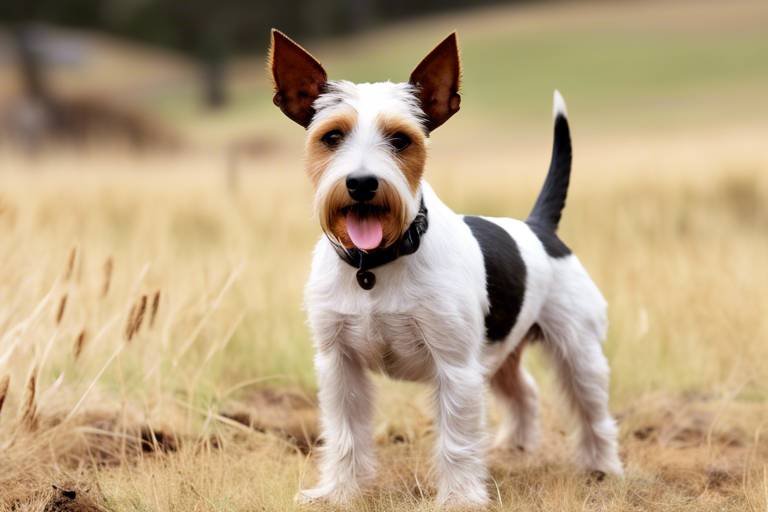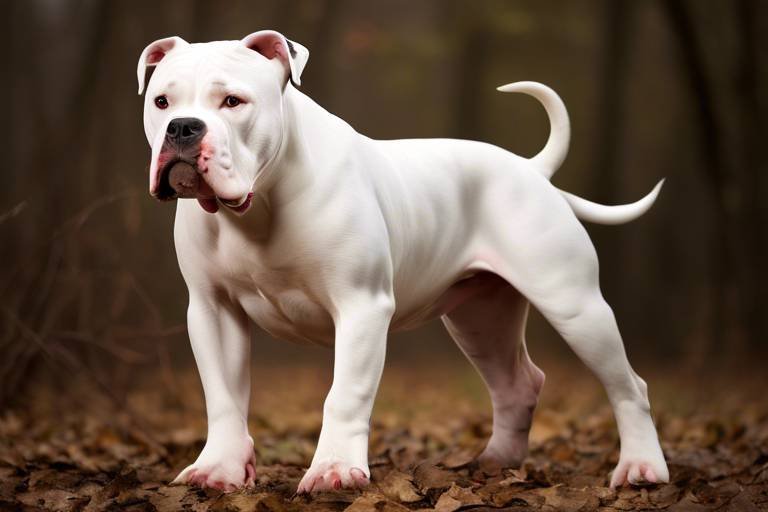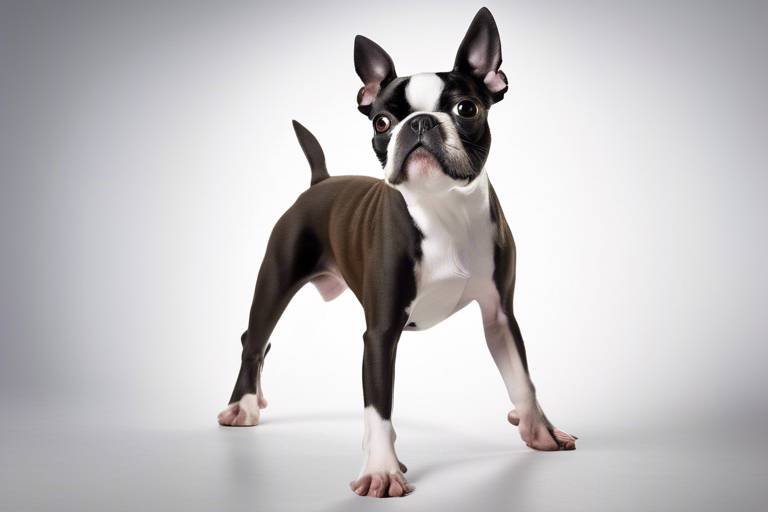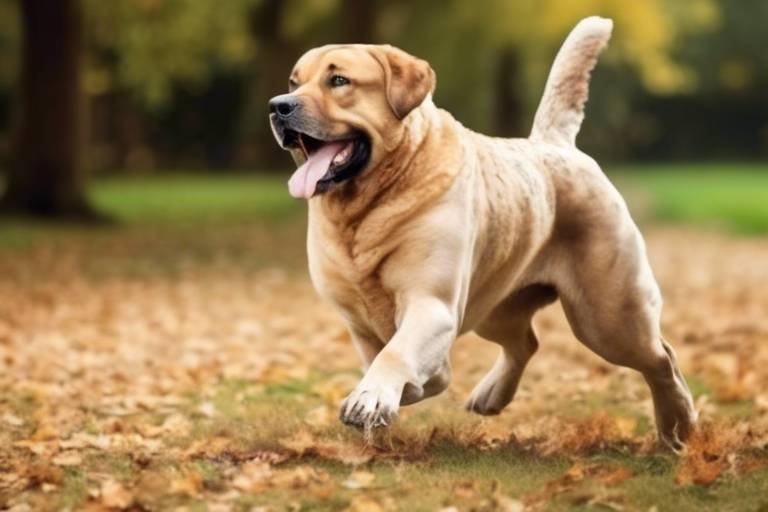Understanding the Differences Between Working and Sporting Dog Breeds
Choosing a dog can feel like a daunting task, especially when considering the vast array of breeds available. Among these, working and sporting dog breeds stand out due to their unique characteristics and purposes. Understanding these differences is crucial for potential dog owners, as it helps in selecting a canine companion that aligns with their lifestyle and needs. So, what exactly sets these two groups apart? Let’s dive into the fascinating world of working and sporting dogs, exploring their traits, temperaments, and the roles they play in our lives.
Working dog breeds are the unsung heroes of the canine world, bred specifically for tasks that require strength, intelligence, and endurance. These dogs are not just pets; they are partners in various roles such as herding livestock, guarding property, and even performing search and rescue missions. When you think of a working dog, imagine a loyal companion that thrives on purpose and responsibility. Understanding their traits and capabilities is essential for potential owners who seek a dog that excels in these demanding roles. For instance, breeds like the German Shepherd and Rottweiler are well-known for their protective instincts and ability to learn complex tasks quickly.
On the flip side, we have sporting dog breeds, which are like the life of the party! Known for their energy and agility, these dogs are often used in hunting and field activities. They are bred to be enthusiastic, friendly, and active, making them excellent companions for families who enjoy outdoor adventures. Think of them as the athletes of the dog world, always ready to play fetch or join you on a hike. Breeds such as the Labrador Retriever and Golden Retriever exemplify this playful nature, requiring ample exercise and mental stimulation to keep them happy and healthy.
When we look at working dogs, several common traits emerge. These dogs typically exhibit remarkable strength, intelligence, and endurance. Their physical capabilities allow them to perform a variety of roles effectively, from police work to search and rescue operations. However, these traits come with a caveat: they require dedicated training and socialization to thrive. A well-trained working dog is not only a joy to have but also a reliable partner in any task they undertake. It's essential for owners to engage in consistent training practices, focusing on positive reinforcement to cultivate a strong bond and ensure the dog reaches its full potential.
The temperament of working dogs often includes loyalty, protectiveness, and a strong drive to please their owners. Imagine having a friend who is always ready to stand by your side and protect you—this is the essence of a working dog. Understanding these traits is vital for owners looking to create a harmonious living environment. A well-socialized working dog can adapt to family life while still being attentive to its responsibilities. This balance is crucial for fostering a positive relationship between the dog and its human companions.
Training working dogs is no walk in the park; it requires consistency and a positive approach. Effective training techniques can include a mix of obedience training, agility exercises, and socialization practices. By establishing a routine that incorporates these elements, owners can help their working dogs fulfill their potential in their designated roles. For example, using clicker training can be an excellent way to reinforce good behavior while keeping the process fun and engaging for both the dog and the owner.
Moving on to sporting dogs, these breeds are characterized by their friendly disposition, high energy levels, and an insatiable enthusiasm for physical activity. They are the quintessential family dogs, always eager to join in on fun and games. Their playful nature makes them excellent companions for active families and outdoor enthusiasts. Sporting dogs thrive on interaction and exercise, so it’s essential for owners to provide them with plenty of opportunities to play and explore. Whether it's a game of fetch at the park or a long hike in the woods, these dogs live for the thrill of adventure.
Regular exercise is not just a luxury for sporting dogs; it’s a necessity for their physical and mental well-being. A lack of activity can lead to behavioral issues, such as excessive barking or destructive tendencies. To keep these breeds happy and healthy, owners should consider incorporating a variety of activities into their routines. Some appropriate exercises include:
- Daily walks or runs
- Agility training courses
- Fetch games
- Swimming sessions
By engaging in these activities, owners can ensure their sporting dogs remain physically fit and mentally stimulated, which is key to their overall happiness.
Socialization is another critical aspect for sporting dogs, as it helps them develop good behavior and adaptability. Exposing them to various environments, people, and experiences from a young age can make a significant difference in their temperament. Imagine a dog that is not only friendly but also comfortable in diverse situations—this is the result of proper socialization. Dog parks, puppy classes, and playdates can serve as excellent opportunities for sporting dogs to learn and grow.
Ultimately, selecting the right breed requires careful consideration of your lifestyle, activity level, and living situation. Are you an active individual who enjoys outdoor adventures? A sporting dog might be the perfect fit! On the other hand, if you need a dog that can assist in specific tasks or provide protection, a working dog could be your ideal match. Taking the time to evaluate your needs and preferences will ensure a successful companionship, leading to a fulfilling relationship with your new furry friend.
1. What is the main difference between working and sporting dogs?
Working dogs are bred for specific tasks such as guarding or herding, while sporting dogs are designed for activities like hunting and retrieving.
2. Do working dogs require more training than sporting dogs?
Generally, yes. Working dogs often need specialized training to perform their tasks effectively.
3. Can sporting dogs live in apartments?
While they can adapt, sporting dogs typically need ample exercise and space to thrive, making homes with yards preferable.
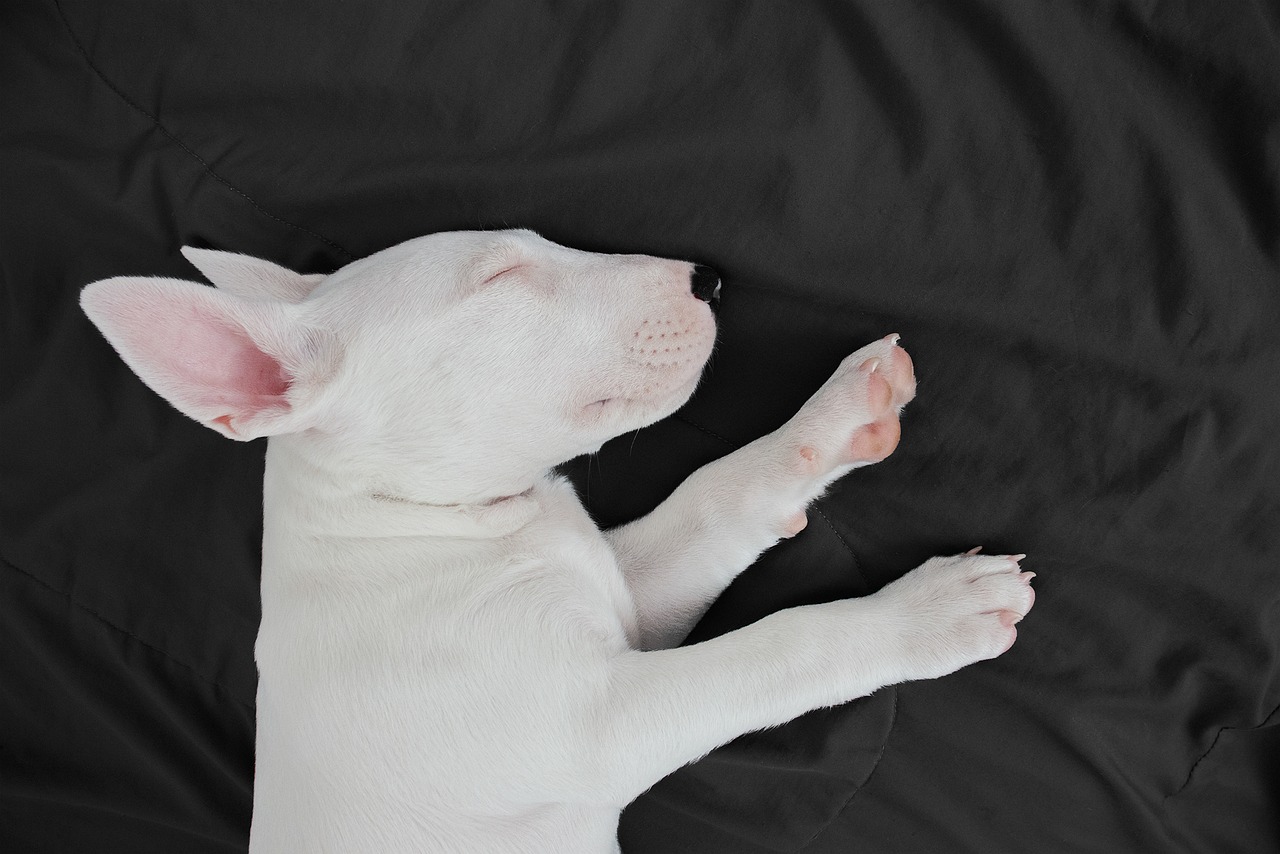
Defining Working Dog Breeds
Working dog breeds are a remarkable group of canines, specifically bred for a variety of tasks that showcase their incredible abilities and intelligence. These dogs are not just pets; they are partners in work, trained to perform essential roles that can range from herding livestock to providing protection for their human companions. Imagine a dog that not only keeps your home safe but also has the stamina to chase after a runaway sheep or assist in rescue operations during emergencies. This is the essence of working dogs!
These breeds are characterized by their strength, intelligence, and endurance, traits that make them well-suited for various demanding jobs. For instance, breeds like the German Shepherd and the Belgian Malinois are often employed in police and military work due to their keen senses and trainability. On the other hand, dogs like the Border Collie excel in herding, showcasing their agility and quick decision-making skills. It's fascinating to think about how these breeds have evolved to meet the needs of humans, often forming deep bonds that go beyond the typical pet-owner relationship.
When considering a working dog, it's crucial to understand their traits and capabilities. Most working dogs require a significant amount of physical exercise and mental stimulation to thrive. They are not the type of dogs that can be left alone for long periods or kept in a small apartment without any outlets for their energy. Instead, they flourish in environments where they can engage in activities that challenge their minds and bodies. This could mean long walks, agility training, or even participating in dog sports. The more you engage them, the happier and more balanced they will be.
In summary, working dog breeds are not just about their physical prowess; they are about their dedication and drive to serve alongside humans. Understanding their unique characteristics is essential for potential owners who wish to provide a loving and stimulating environment for these remarkable animals. Whether you’re looking for a loyal protector or a capable assistant, choosing a working dog breed can lead to a fulfilling partnership that enriches both your lives.
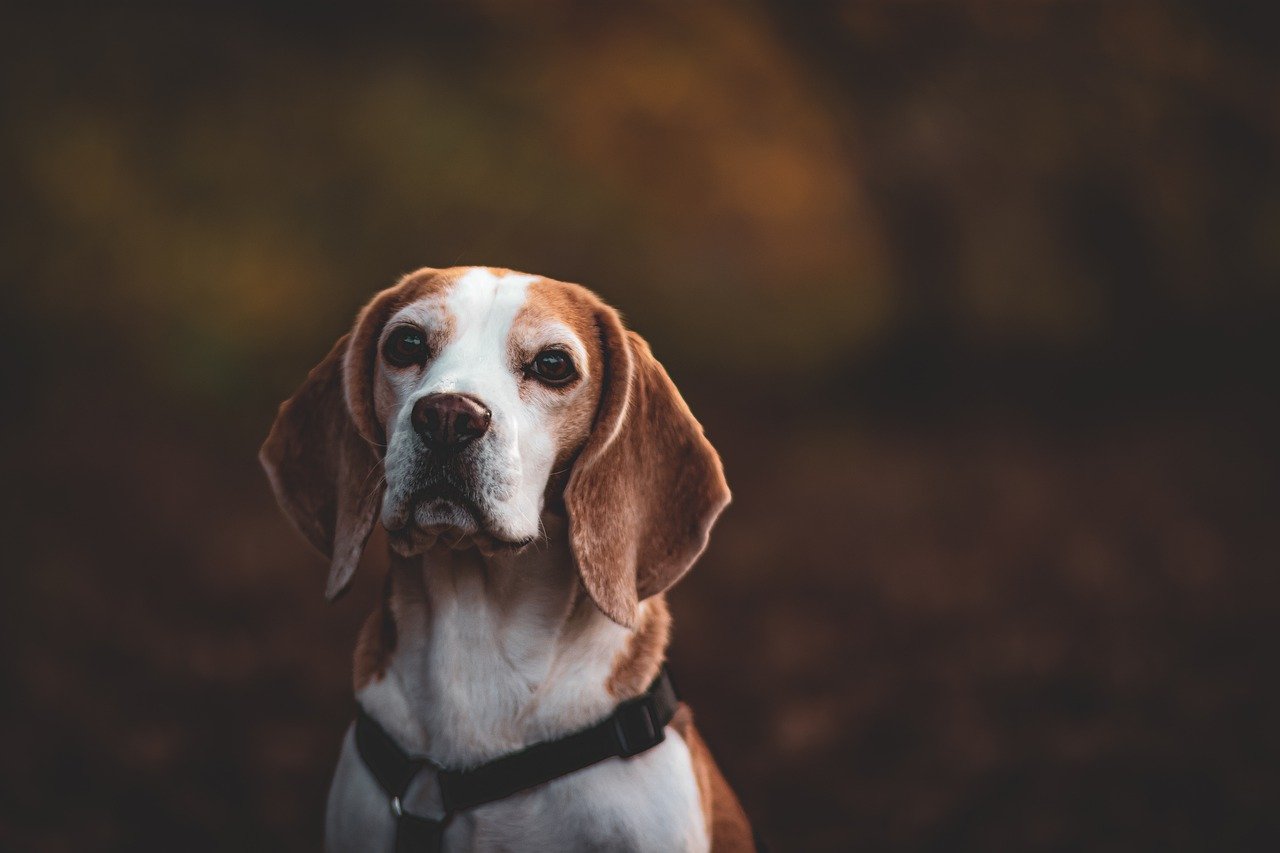
Defining Sporting Dog Breeds
When we think of sporting dog breeds, the first image that often comes to mind is that of a lively, energetic dog bounding through fields, chasing after birds, or splashing through water. These breeds are not just adorable; they are purposefully bred for their athleticism and enthusiasm for outdoor activities. Sporting dogs, such as Retrievers, Spaniels, and Setters, were developed to assist hunters in locating and retrieving game. Their natural instincts, combined with a friendly disposition, make them not only excellent working companions but also fantastic family pets.
One of the standout features of sporting dogs is their high energy levels. They thrive on physical activity and require ample exercise to keep them both physically fit and mentally stimulated. Imagine a child cooped up inside all day without any playtime; that’s how a sporting dog feels without enough exercise! Regular activities such as fetching, swimming, and agility training are not just fun for these dogs; they are essential for their overall well-being.
Sporting dogs also possess a natural curiosity and a strong desire to explore their surroundings. This makes them particularly well-suited for outdoor enthusiasts who enjoy hiking, running, or even participating in dog sports. Their playful nature and eagerness to please can lead to a rewarding bond between the dog and its owner. However, it's important to remember that with great energy comes great responsibility. Owners must be prepared to dedicate time and effort to training and socializing these breeds to ensure they develop into well-rounded companions.
In addition to their physical traits, sporting dogs are known for their intelligence. They are quick learners, which makes training a delightful experience. However, this intelligence also means they can become bored easily if not challenged appropriately. Engaging them in activities that stimulate their minds, such as puzzle toys or scent work, can help curb any unwanted behaviors that might arise from boredom.
In summary, sporting dog breeds are characterized by their enthusiasm, energy, and intelligence. They are not just pets; they are active partners in adventure, ready to take on the world alongside their human companions. Whether you're a seasoned hunter or just someone who loves to spend time outdoors, these dogs can bring a unique joy and excitement to your life.
Common Traits of Working Dogs
When we talk about working dogs, we're diving into a world filled with incredible traits that make these breeds truly exceptional. These dogs are not just pets; they are partners in various tasks that require a unique blend of strength, intelligence, and endurance. Imagine a dog that is not only loyal but also possesses the ability to think critically and act decisively. That’s what you get with working dogs!
One of the most noticeable traits of working dogs is their strength. Breeds like the German Shepherd and Rottweiler are built for physical challenges, making them excellent choices for roles in police work or search and rescue operations. Their muscular build and stamina allow them to perform demanding tasks that would be impossible for less robust breeds. This physical prowess is complemented by their intelligence. Working dogs are often quick learners, capable of mastering complex commands and tasks. This intelligence is what makes them suitable for various roles, from guiding the visually impaired to assisting in therapy work.
Another critical trait is their endurance. Working dogs are bred to handle long hours of work, whether it’s herding sheep across vast fields or patrolling a neighborhood. They thrive on activity and require regular exercise to keep them physically and mentally stimulated. If you’re considering a working dog, be prepared for a companion that needs more than just a casual walk around the block. They need a job to do, and they thrive when they have a purpose.
Moreover, working dogs often exhibit a strong drive to please their owners. This trait is crucial for effective training and bonding. They are eager to learn and take pride in their accomplishments, which makes training sessions not just productive but also enjoyable. It’s like having a partner who is just as invested in your shared goals as you are! However, this drive also means that they can become bored or anxious without sufficient mental and physical stimulation, so it’s essential to keep them engaged.
To sum it up, the common traits of working dogs include:
- Strength - Built for physical challenges.
- Intelligence - Quick learners capable of mastering complex tasks.
- Endurance - Can handle long hours of work and require regular exercise.
- Drive to please - Eager to learn and bond with their owners.
Understanding these traits is vital for potential owners. It helps in creating a harmonious living environment where both the dog and the owner can thrive. If you’re ready to invest time and energy into training and socializing a working dog, you’ll find a loyal companion that can perform remarkable tasks and share a deep bond with you.
- What are some examples of working dog breeds?
Common examples include German Shepherds, Rottweilers, Siberian Huskies, and Doberman Pinschers.
- Do working dogs require special training?
Yes, working dogs often need specialized training to perform their designated tasks effectively.
- Can working dogs be family pets?
Absolutely! With proper training and socialization, many working dogs can make wonderful family pets.
- How much exercise do working dogs need?
Working dogs typically require at least 1-2 hours of exercise each day, depending on the breed and age.
Temperament of Working Dogs
When it comes to working dogs, their temperament is one of the most fascinating aspects to consider. These dogs are not just bred for their physical capabilities; their mental and emotional traits play a crucial role in how they perform their tasks. Generally, working dogs are characterized by a strong sense of loyalty, protectiveness, and an innate desire to please their owners. Imagine having a companion who is not only your friend but also your protector and helper—this is what a working dog brings to the table.
One of the standout features of working dogs is their intelligence. These breeds are often quick learners, making them suitable for complex tasks such as search and rescue missions or police work. Their ability to grasp commands and respond to training is remarkable. However, this intelligence also means they require mental stimulation. A bored working dog can become destructive, akin to a child left unattended with nothing to do. Therefore, engaging them in activities that challenge their minds is essential.
Moreover, the protectiveness of working dogs is a double-edged sword. On one hand, it makes them excellent guardians for your home and family. On the other hand, it necessitates proper socialization from an early age. If not socialized properly, a protective dog might become overly wary of strangers or other animals. This can lead to behavioral issues that might be challenging to correct later on. Therefore, exposing them to different environments and experiences is key to fostering a well-rounded temperament.
In terms of energy levels, working dogs tend to be high-energy breeds. They thrive on physical activity and mental challenges, which is why they excel in roles that require stamina and endurance. Think of them as the athletes of the canine world! Regular exercise is not just a luxury for these dogs; it’s a necessity. Without it, their natural instincts can lead to restlessness and frustration, which might manifest in undesirable behaviors.
To summarize, the temperament of working dogs is shaped by a blend of loyalty, intelligence, protectiveness, and energy. Understanding these traits is vital for potential owners. It helps in creating an environment where both the dog and the owner can thrive together. By recognizing the unique characteristics of working dogs, you can ensure a harmonious relationship that benefits both parties.
- What are the best training methods for working dogs? Consistency and positive reinforcement are crucial. Using rewards-based training helps them learn effectively.
- Do working dogs require more exercise than other breeds? Yes, working dogs typically need more physical and mental stimulation compared to many other breeds.
- Can working dogs be good family pets? Absolutely! With proper training and socialization, many working dogs can be loving and loyal family companions.
- How can I help my working dog socialize? Expose them to different environments, people, and other animals from a young age to help them adapt and develop good behavior.
Training Needs for Working Dogs
Training working dogs is not just about teaching them commands; it's about building a strong bond and understanding between the dog and its owner. These breeds thrive on structure and consistency, which is why a well-defined training routine is essential. Just like a well-tuned machine, a working dog performs best when it's given clear instructions and expectations. So, what does effective training look like for these remarkable canines?
First and foremost, positive reinforcement is key. This training method encourages desirable behaviors by rewarding your dog with treats, praise, or playtime when they successfully follow a command. Imagine how much more motivated you would feel to complete a task if you knew a reward was waiting for you at the end! This approach not only makes training sessions enjoyable but also strengthens the bond between you and your dog.
Another important aspect is socialization. Working dogs often find themselves in various environments, from bustling city streets to quiet rural settings. Exposing them to different people, animals, and situations from an early age helps them adapt and respond appropriately in diverse scenarios. For instance, a German Shepherd trained for police work needs to be comfortable around crowds and loud noises. Socialization can be achieved through puppy classes, visits to dog parks, and regular outings.
Moreover, training should incorporate mental stimulation. Working dogs are intelligent and require challenges to keep them engaged. Activities like obedience training, agility courses, or even puzzle toys can provide the mental workout they need. Think of it as giving your dog a workout for their brain, similar to how you might enjoy solving a challenging puzzle or playing a strategic game. This not only keeps them entertained but also helps reduce behavioral issues stemming from boredom.
Consistency in training is another crucial element. Establishing a routine helps your dog understand what is expected of them. For example, if you want your dog to learn the command "sit," it’s important to use the same word and hand signal each time. If you mix it up, your dog might get confused, leading to frustration for both of you. Just like learning a new language, repetition and consistency are vital for mastering new skills.
Lastly, patience is a virtue when it comes to training working dogs. Some breeds may pick up commands quickly, while others might take longer to grasp the concept. It’s essential to remember that every dog learns at its own pace. Celebrate the small victories along the way, and don’t be discouraged by setbacks. With time and dedication, your working dog will not only learn commands but also develop into a well-rounded companion.
- How long does it take to train a working dog? Training duration varies by breed and individual temperament, but consistency and daily practice can lead to significant progress in a few months.
- What is the best age to start training? It's recommended to start training as early as possible, ideally during puppyhood, to create a strong foundation for behavior and obedience.
- Are there specific training methods for different working breeds? Yes, different breeds may respond better to certain training methods, so it's important to tailor your approach to your dog's unique characteristics.
Common Traits of Sporting Dogs
Sporting dogs are like the life of the party—always eager to join in on the fun! These breeds are characterized by their friendly disposition and high energy levels, making them perfect companions for families and outdoor enthusiasts alike. Imagine a dog that’s always ready for a game of fetch or an adventure at the park; that’s the essence of sporting dogs! Their enthusiasm for physical activity is not just a quirk; it’s a vital part of their being.
These dogs are typically bred for hunting and field activities, which means they have a natural instinct to chase and retrieve. This instinct is often accompanied by a remarkable agility that allows them to navigate various terrains with ease. Whether it’s a brisk run through the woods or a splash in the lake, sporting dogs thrive on activities that challenge their physical abilities. They need to be engaged, both mentally and physically, to prevent boredom, which can lead to destructive behaviors.
One of the most appealing traits of sporting dogs is their playful nature. They are often described as affectionate and loyal, forming strong bonds with their families. This deep connection makes them not only great pets but also excellent companions for children. They are typically patient and gentle, making them suitable for families with young kids.
To truly understand the common traits of sporting dogs, let’s break it down into a few key characteristics:
- Intelligence: Sporting dogs are often highly trainable, thanks to their quick learning abilities.
- Social Nature: They generally get along well with other pets and people, making them great additions to any household.
- Strong Work Ethic: Whether it’s retrieving a ball or participating in dog sports, sporting dogs are always ready to work and play.
In summary, sporting dogs are a bundle of energy wrapped in a friendly package. Their need for exercise and play, combined with their social nature and intelligence, makes them unique companions. If you’re considering adding a sporting dog to your family, be prepared for a lively, loving, and loyal friend who will keep you on your toes!

Exercise Requirements for Sporting Dogs
Sporting dogs are like energizer bunnies on four legs; their boundless energy and enthusiasm for play make them one of the most active breeds out there. To keep these dogs happy and healthy, regular exercise is not just a luxury—it’s a necessity. Think of it this way: if you were cooped up in a small room all day without any activity, you'd likely feel restless and a bit cranky, right? Well, your sporting dog feels the same way without proper exercise!
These breeds thrive on physical activity, and the more creative you get with their exercise routines, the happier they’ll be. A simple walk around the block just won’t cut it. Instead, consider incorporating a mix of activities that challenge both their bodies and minds. Here are some engaging ideas:
- Fetch Games: Nothing beats a good old-fashioned game of fetch! This classic activity allows your dog to run freely while honing their retrieving instincts.
- Agility Training: Setting up an agility course in your backyard can provide both mental stimulation and physical exercise. Plus, it’s a great way for you and your dog to bond!
- Swimming: Many sporting breeds love water. Swimming is a fantastic way to exercise without putting too much strain on their joints.
- Hiking: Take your dog on a hike! Exploring new trails not only provides physical exercise but also stimulates their senses with new sights and smells.
Keep in mind that sporting dogs typically require at least an hour of vigorous exercise each day. This might sound like a lot, but remember that these dogs were bred for stamina and endurance. If you can’t provide that much exercise every day, consider splitting it into two sessions—morning and evening—to keep their energy levels balanced. Additionally, incorporating interactive toys or puzzle games can help keep their minds sharp on days when outdoor activity might not be feasible.
It's also essential to monitor your dog during exercise. Just like humans, dogs can overdo it, especially if they’re not used to intense activity. Start slow and gradually increase the intensity and duration of their workouts. Always provide plenty of fresh water and take breaks as needed.
In summary, the exercise requirements for sporting dogs are quite significant, but with a little creativity and commitment, you can create a fulfilling routine that keeps your furry friend both physically fit and mentally stimulated. After all, a tired dog is a happy dog!
| Question | Answer |
|---|---|
| How much exercise do sporting dogs need? | Sporting dogs typically require at least one hour of vigorous exercise each day. |
| Can I walk my sporting dog instead of running? | While walking is beneficial, it’s best to include activities like running, fetching, and agility training to meet their exercise needs. |
| What are some good indoor exercises for sporting dogs? | Interactive toys, puzzle games, and short training sessions can be great indoor activities. |
| How do I know if my dog is getting enough exercise? | If your dog is calm and relaxed at home, they’re likely getting enough exercise. Excessive barking or destructive behavior can indicate they need more activity. |
Socialization of Sporting Dogs
Socialization is a critical aspect of raising a well-adjusted sporting dog. These breeds, known for their playful nature and high energy levels, thrive on interaction with both people and other animals. Early and consistent socialization helps them develop into confident and friendly companions. Imagine a puppy that has never met another dog; it might grow up to be fearful or overly aggressive, simply because it lacks the necessary experiences to understand how to behave around others. By exposing your sporting dog to various environments, people, and animals from a young age, you can prevent these behavioral issues.
One effective way to socialize your sporting dog is through puppy classes or obedience training. These settings provide a controlled environment where your dog can interact with other dogs and learn basic commands. Additionally, taking your dog on outings to dog parks, pet-friendly stores, or even just around the neighborhood can expose them to different sights, sounds, and smells. This exposure is crucial for their development and helps them become more adaptable to new situations.
It's also essential to remember that socialization isn't just a one-time event. It’s an ongoing process. Regularly introducing your dog to new experiences will help reinforce their confidence and adaptability. Here are some tips to ensure effective socialization:
- Start Early: Begin socializing your puppy as soon as you bring them home, ideally before they are 16 weeks old.
- Positive Reinforcement: Use treats and praise to reward your dog for calm behavior during new experiences.
- Controlled Introductions: Gradually introduce your dog to new people and animals in a safe and controlled manner.
- Variety of Experiences: Expose your dog to different environments, sounds, and activities to broaden their comfort zone.
Remember, the goal of socialization is to help your sporting dog feel comfortable and confident in various situations. A well-socialized dog is not only more enjoyable to be around but also less likely to develop behavioral problems down the line. So, get out there, have fun, and watch your sporting dog flourish in their social interactions!
Q: How long should I socialize my sporting dog?
A: Socialization should begin as early as possible and continue throughout your dog's life. Regular exposure to new experiences will keep them well-adjusted.
Q: What are the signs that my dog is not well-socialized?
A: Signs may include fearfulness, aggression, excessive barking, or anxiety in new situations. If you notice these behaviors, it may be time to increase socialization efforts.
Q: Can older dogs be socialized?
A: Yes, while it may take more time and patience, older dogs can still benefit from socialization. Gradual exposure to new experiences can help them adapt.
Q: Should I use professional trainers for socialization?
A: If you're unsure how to properly socialize your dog, working with a professional trainer can be a great investment. They can provide guidance and structured environments for effective socialization.
Choosing the Right Breed for Your Lifestyle
When it comes to selecting a dog, one size definitely does not fit all. Just like people have different preferences and lifestyles, dogs do too! Choosing the right breed is crucial for ensuring a harmonious relationship between you and your canine companion. The first step is to assess your own lifestyle. Do you lead a busy life filled with work commitments, or do you have ample time to dedicate to a furry friend? Are you an outdoor enthusiast who loves hiking, or do you prefer cozy nights at home? Understanding your daily routine and activity levels will help you narrow down your options.
Different breeds have unique needs and temperaments, making it essential to match these characteristics with your lifestyle. For instance, if you’re an active individual, a sporting dog may be a perfect fit. These breeds thrive on physical activity and require daily exercise to keep them happy and healthy. On the other hand, if your life is more sedentary, a working dog that enjoys a bit of mental stimulation and less intense physical activity might be the better choice.
Here are some key factors to consider when choosing the right breed:
- Activity Level: Think about how much time you can dedicate to exercising your dog. High-energy breeds like Labrador Retrievers or Border Collies require significant daily exercise, while low-energy breeds like Bulldogs or Shih Tzus may be content with shorter walks.
- Space: Do you live in a small apartment or a spacious house with a yard? Larger breeds often need more space to roam and play, while smaller breeds can adapt well to tighter living conditions.
- Family Dynamics: If you have children or other pets, consider breeds known for their friendly and tolerant nature. Some working dogs may be protective and require careful introduction to family members.
- Training Commitment: Are you prepared to invest time in training? Working dogs often require more structured training and socialization compared to sporting breeds, which may be more naturally inclined to be friendly and playful.
Ultimately, the goal is to find a breed that complements your lifestyle, ensuring both you and your dog can thrive together. Remember, adopting a dog is a long-term commitment, so take your time to research and reflect on what breed will fit best into your life. The right match can lead to years of joy, companionship, and unforgettable memories.
1. How do I know if a dog is the right fit for my family?
Consider your family's activity level, the ages of children, and any allergies. Research breeds to find those known for compatibility with families.
2. What if I have a busy lifestyle?
Look for breeds that are more independent or require less exercise. Some breeds, like French Bulldogs, are more suited for a less active lifestyle.
3. Can I adopt a dog if I live in an apartment?
Absolutely! Many small and medium-sized breeds adapt well to apartment living. Just ensure they get enough daily exercise.
4. Should I consider adopting an older dog?
Older dogs often require less training and may already be housebroken, making them a great option for busy families.
Frequently Asked Questions
- What are the main differences between working and sporting dog breeds?
Working dog breeds are primarily bred for specific tasks such as guarding, herding, and rescue operations. In contrast, sporting dog breeds are known for their energetic and playful nature, often excelling in hunting and field activities. While both types of dogs require training and exercise, their purposes and temperaments differ significantly.
- What traits should I look for in a working dog?
When considering a working dog, look for traits such as strength, intelligence, and endurance. These dogs often need to perform tasks that require a strong drive to please, loyalty, and protectiveness. Understanding these traits can help you choose a breed that fits well with your lifestyle and needs.
- How much exercise do sporting dogs need?
Sporting dogs typically require a significant amount of exercise to stay healthy and happy. Daily activities can include running, swimming, and playing fetch. It's recommended that they get at least an hour of vigorous exercise each day to keep their energy levels in check and prevent behavioral issues.
- Are working dogs suitable for families?
Yes, many working dogs can be great family pets, provided they receive proper training and socialization. However, potential owners should consider the dog's temperament and energy levels. Some working breeds may require more attention and exercise than a typical family lifestyle can offer.
- What is the importance of socialization for sporting dogs?
Socialization is crucial for sporting dogs as it helps them develop good behavior and adaptability. Exposing them to various environments, people, and other animals from a young age can lead to a well-adjusted adult dog. This helps prevent behavioral problems and ensures they are comfortable in different situations.
- How do I choose the right breed for my lifestyle?
Choosing the right breed involves assessing your activity level, living situation, and the amount of time you can dedicate to training and exercise. Research different breeds to understand their needs and characteristics, and consider adopting a dog that matches your lifestyle to ensure a successful companionship.




